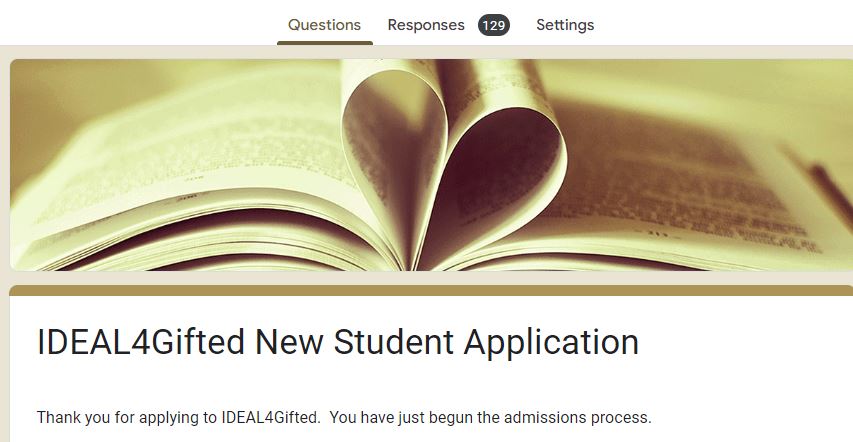
1. Parent Questionnaire
Click here to begin the admissions process by filling out the questionnaire.
We evaluate your responses to see if we think our program might be a good fit for your child.
2. Tangible Information – If, based on the questionnaire, it seems like our program might be a good fit for your child, then we ask for some objective information. We need this as a balance to the subjective questionnaire. This could be an IQ test with its subscores, an achievement test, or other standardized tests and subscores. If those aren’t available, samples of the student’s work are also helpful. (Standardized assessment information is required regarding a student’s special needs, if any.)
There aren’t any cut-off scores on any of the information. All of the information is considered as a whole to determine if we can provide the kind of education that will be a good fit for your child’s needs.
3. Virtual Chat – If the results of both the questionnaire and the tangible information seem to indicate that we might be a good fit for your child, then we have an informal meeting with Dr. Stewart, the parent, and the child where the child talks about their interests and their opinions about schools, and the parent and Dr. Stewart chat a bit and ask questions of each other.
4. Visit – If both sides feel that all is going well so far, then the next step is a visit. The potential student has a chance to visit some classes to see what they are like. Parents should be nearby but not on camera.
———————————————————————————————————
If, after this process, both the parent and the program think it will be a good fit for the child’s education, then we send a letter to the family offering the child a place in the program.
Next is Registration and Tuition – Because there are multiple program options available, please contact us at [email protected] to discuss details. Once a deposit is received, a Parent & Student Handbook is sent out along with the schedule and other helpful information. New students and parents also have an Orientation Day where they find out about our systems, and we find out about them as learners through conversation, the use of a few surveys, and some assessments for class group placements.
